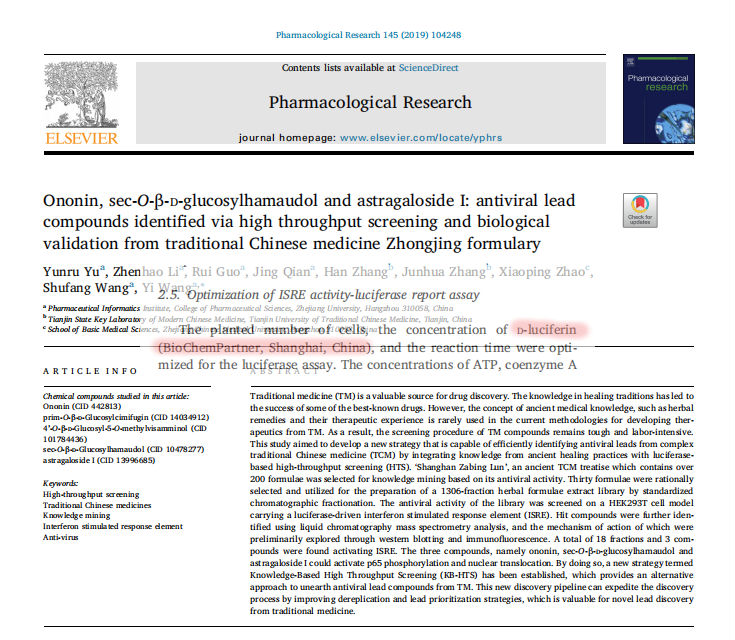
8YR企业会员
发布人:上海瀚香生物科技有限公司
发布日期:2020/5/22 16:32:22
Yunru Yu , Zhenhao Li , Rui Guo , Jing Qian , Han Zhang , Junhua Zhang , Xiaoping Zhao , Shufang Wang , Yi Wang
PMID: 31082475 DOI: 10.1016/j.phrs.2019.04.032

Traditional medicine (TM) is a valuable source for drug discovery. The knowledge in healing traditions has led to the success of some of the best-known drugs. However, the concept of ancient medical knowledge, such as herbal remedies and their therapeutic experience is rarely used in the current methodologies for developing therapeutics from TM. As a result, the screening procedure of TM compounds remains tough and labor-intensive. This study aimed to develop a new strategy that is capable of efficiently identifying antiviral leads from complex traditional Chinese medicine (TCM) by integrating knowledge from ancient healing practices with luciferase-based high-throughput screening (HTS). 'Shanghan Zabing Lun', an ancient TCM treatise which contains over 200 formulae was selected for knowledge mining based on its antiviral activity. Thirty formulae were rationally selected and utilized for the preparation of a 1306-fraction herbal formulae extract library by standardized chromatographic fractionation. The antiviral activity of the library was screened on a HEK293T cell model carrying a luciferase-driven interferon stimulated response element (ISRE). Hit compounds were further identified using liquid chromatography mass spectrometry analysis, and the mechanism of action of which were preliminarily explored through western blotting and immunofluorescence. A total of 18 fractions and 3 compounds were found activating ISRE. The three compounds, namely ononin, sec-O-β-d-glucosylhamaudol and astragaloside I could activate p65 phosphorylation and nuclear translocation. By doing so, a new strategy termed Knowledge-Based High Throughput Screening (KB-HTS) has been established, which provides an alternative approach to unearth antiviral lead compounds from TM. This new discovery pipeline can expedite the discovery process by improving dereplication and lead prioritization strategies, which is valuable for novel lead discovery from traditional medicine.